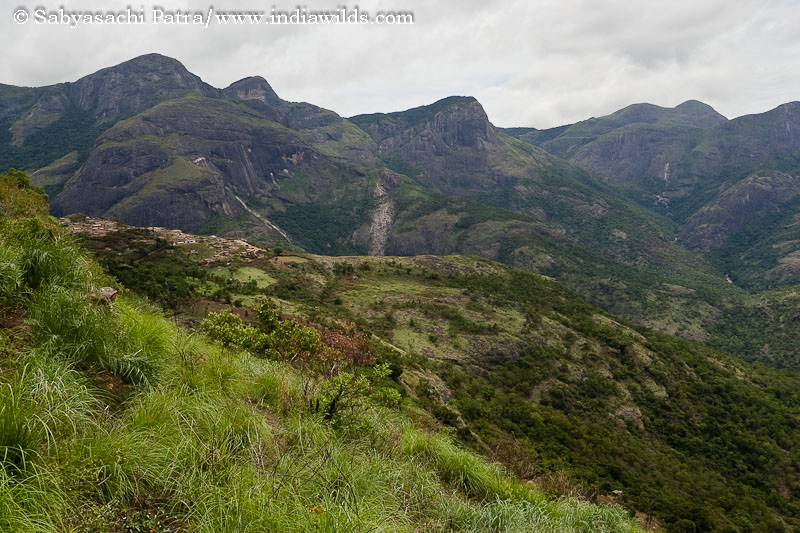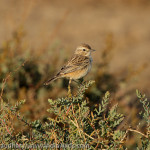IndiaWilds Newsletter Vol. 13 Issue III
ISSN 2394 – 6946
Give Chance to Nature to Recolonise
Human population has grown from 1.6 billion in 1900 to 7.79 billion today. This sudden expansion of human population is not without its impact. People had to seek food from not only from the forest in form of fruits and other non-timber forest produce, they had to also clear fell vegetation to convert the land into agricultural field. The need to have a roof on their heads lead to lot of constructions again at the cost of forests. Today our forests occupy just a fragment of the area they were in just a century ago.
The massive deforestation, dam building and other anthropogenic pressures has taken a toll on the Planet Earth and as a consequence global ambient temperatures have been rising every month for past 434 Months. February 2021 marked the 45th consecutive February and the 434th consecutive month with temperatures, at least nominally, above the 20th century average. https://www.ncdc.noaa.gov/sotc/global/202102
Climate change has been on us. The climate change induced heat waves, cyclones, landslides etc has become a regular feature. Desertification is another challenge staring us in our face. India has 32 percent of land under degradation and 25% of land is undergoing desertification.(MoEF, http://moef.gov.in/en/division/forest-divisions-2/desertification/introduction/ )
This has resulted in people and organisations thinking of giving a helping hand to the natural world to help and regenerate. Unfortunately, even though people are enthusiastic, there are lot of misconceptions plaguing these efforts.
Challenge in recreating forests:
There are challenges in recreating forests. There is a wise saying that you can plant trees but cannot create a forest. The reason for this saying is that we can choose and plant different species of trees in lands that had earlier been under occupation of people. However, in natural forests there is a complex web of ecological interrelationships between various species. Each tree is a mini ecosystem in itself with various species of microbes, insects, herpetofauna, birds etc colonizing them. Most of these complex interrelationships between species have not yet been completely deciphered by scientists. So even though people plant lot of different species of trees, however, recreating those complex interrelationships between species and achieving an ecological balance is not easy. There is always hope for human plantations as nature has its own ways of recolonizing spaces if given sufficient time and freedom.
Fish Dispersal to new water bodies:
Scientists have discovered that if you create a water body and then no fish is introduced, still after passage of sufficient time, fish can be found in these ponds. It was speculated that perhaps fish eggs somehow were able to get transported by getting attached to the feathers and feet of waterbirds. Birds often preen their feathers to keep it clean from any such entanglements else there is a chance of parasites growing. So how did these eggs get transported?
This mystery has been solved by scientists who thought the transport of fish to isolated waterbodies may be due to endozoochory ie. Eggs getting transported through the gut of the fish. It was believed that only highly resistant diapause eggs of killifish can survive the passage through the intestines of birds. However, scientists (Experimental evidence of dispersal of invasive cyprinid eggs inside migratory waterfowl, Adam Lovas-kiss et al, Proceedings of the National Academy of Sciences Jul 2020, 117 (27) 15397-15399) have found that 0.2% eggs of invasive cyprinids could pass through the gut of mallards.
In an experiment they performed a controlled feeding, where “developing eggs of two cosmopolitan, invasive cyprinids (common carp, Prussian carp) were fed to captive mallards. Live embryos of both species were retrieved from fresh feces and survived beyond hatching. Our study identifies an overlooked dispersal mechanism in fish, providing evidence for bird-mediated dispersal ability of soft-membraned eggs undergoing active development. Only 0.2% of ingested eggs survived gut passage, yet, given the abundance, diet, and movements of ducks in nature, our results have major implications for biodiversity conservation and invasion dynamics in freshwater ecosystems.”
So if one creates a fresh water pond with tall trees that are suitable for nesting of birds and if there is no disturbance for nesting birds, then ducks and water birds are supposed to use it for roosting and fish species would soon appear. Some species which would depend on fish would also line up in that freshwater body. Though how long this will take is anyone’s guess.
Nature has a way of reclaiming places. A recent BBC report found that Chernobyl which faced nuclear disaster and hence was abandoned, has been taken over by wolf and other wild animals. (Chernobyl: The end of a three decade experiment; BBC,14 Feb 2019, https://www.bbc.com/news/science-environment-47227767 ) Old forts once abandoned by people become taken over by large trees and with trees many species would start inhabiting there. However, recreating wilderness areas is not easy because it would not be easy to recreate the biodiversity of forests. Simply allowing an area to lie fallow and allowing nature to reclaim the land is easy. However, if the soil doesn’t have any seeds of native species buried, then those plant and trees species would not appear. In those cases some helping hand would be required. Planting of native large fruit bearing trees is one easier aspect to tap into the nature’s seed dispersal mechanism. Once large native trees start bearing fruits, birds would flock to eat the fruits. These birds would have fed fruits and seeds from some other spot and then the undigested seeds in their excreta would help germinate other native plants and trees.
There would be some helping hand required to remove invasive species from the land that remains unused by humans. Seeds of some native species of plants many be present in the soil but unless the environmental conditions are favourable they may not germinate. Some seasonal flowering plants germinate sensing the right conditions (Memory in Plants, IndiaWilds Newsletter Vol. 8 Issue V, May 2016, https://www.indiawilds.com/diary/indiawilds-newsletter-vol-8-issue-v/ ). Some species of plants germinate after several years. Neela kurinji flowers germinate once in 12 years. Till then their seeds remain dormant in the soil. So if original soil is present even in a small patch of the reclaimed area then it would be easier.
Disturbance free:
The other challenge of recreating the original biodiversity in man made plantations is that most of the times these plantations are not made inviolate or disturbance free. Too often these green areas are used by people for their morning walks, laughter clubs and for other such recreation. So these green spaces become inhospitable for wildlife. Snakes, mongoose, palm civets etc are often chased off and killed by people. So one major part of the area has to be cordoned off and made inviolate for these species.
Connectivity of these green areas with other larger forest patches would always help in various smaller species recolonizing and helping in the seed dispersals and growth of native forests. The way our towns and cities have grown in an unplanned haphazard manner, it would be very important to take look at the maps of entire cities to plan and recreate contiguous green areas which would help in combating the ill effects of climate change and act as lungs of our polluted human habitations.
Sacred Groves
By Mrs. Shakti & Mr. A S Bishnoi
Conservation News:
Massive Forest Fires in Similipal Tiger National Park
Massive fires were reported in Similipal National Park in Odisha. The fires were reported from several zones. Given the dried leaves in summer it quickly spread to various parts and the inferno kept on raging in eight forest ranges for several weeks. On 3rd of March, the Odisha Government engaged over 1000 people which included 750 forest guards, fire tenders and blowers. Two teams of Odisha Disaster Rapid Action Force were also deployed to put out the fire.
The opposition political parties attacked the inept handling of the forest fires by the State Government. The congress party demanded an apology from the State Government saying that the fire burnt precious medicinal plants and killed wildlife. The Odisha state BJP chief whip Mohan Majhi said that Similipal has been deliberately set on fire to erase the signs of massive deforestation.
On 10th March the Ministry of Environment, Forest and Climate Change(MoEF&CC) acting on the directions of the Union Environment Minister, constituted a team consisting of:
- Dr. Amit Mallick, IGF, National Tiger Conservation Authority, New Delhi
- Shri Subratt Mahapatra, DDG, MoEF&CC Regional Office, Bhubaneswar
- Ms. Arti Chaudhary, Head, Silviculture –ICFRE (as fire expert)
The initial Terms ofReference for the team would be:
- Assessment of the status of fire incidents in Odisha, Similipal Tiger Reserve / Biosphere Reserve in particular.
- Expert and technical advice to the State for containment in control of fire in forest area.
- Status of loss of forest and wildlife and its relationship with poaching, if any.
The team would be working till the State attains a normal situation with respect to fire incidents. Further, the Environment Minister Shri Prakash Javadekar informed that along with the team at MoEFCC he will himself be monitoring everyday map showing the forest fire detections in the entire State of Odisha and also a separate map showing fire detection in Similipal Tiger Reserve / Biosphere Reserve.
The Government of Odisha on 11th March announced that the forest fires have been controlled. The effort of the forest department was blessed by Nature Gods as there was a sudden rain in Similipal. That helped douse the forest fire.
Earlier the Government of Odisha had announced that it would constitute a Task Force to review forest fires in Odisha and suggest measures to strengthen the response to such forest fires. Retired Principal Chief Conservator of Forests (PCCF) Shri Sandeep Tripathi will head the nine member task force.
Similipal is one of the first forests to be included in the Project Tiger when it was launched. Similipal is spread of 2750 square kilometers and is a biodiversity hotspot. Similipal is the only place in India where melanistic tigers have been found. Unlike most other tiger reserves no major highways or railway lines pass through the forest to cause disturbance. However, there is a tradition of hunting called “Akhanda Shikar” where all the tribals come together to hunt enmasse. The locals also engage in poaching. The Tibals put fire on a patch of forest and then wait for the animals to start moving towards them to avoid the fire. They then pick and choose animals and kill. In the last few years, the villages in the buffer area have increased in population and wide roads and multi-storied buildings have come up. The income from illegal woodcutting and poaching is a major cause of affluence of these villages. If Similipal has to bounce back and reclaim its glory of being a leading Tiger Reserve, as it was during the time of the legendary Saroj Raj Choudhury, then it needs to be governed by strong officers and backed by political willpower.
MoU signed under National Clean Air Programme:
A Memorandum of Understanding (MoU) was signed today by representatives of State Pollution Control Boards, Urban Local Bodies and Institutes of Repute for 132 identified cities for implementation of city specific action plans under National Clean Air Programme (NCAP).
The National Clean Air Programme (NCAP) is a long-term, time-bound, national level strategy to tackle air pollution problem across the country in a comprehensive manner with targets to achieve 20% to 30% reduction in Particulate Matter concentrations by 2024 (with 2017 as base year).
The city action plans have been prepared to control specific air pollution sources through multidimensional actions by brining several implementation agencies together. Expansion of ambient air quality network, source apportionment studies, public awareness, grievance redressal mechanism and sector specific action points are part of these action plans.
For successful implementation, there was a paramount need for cooperation and coordination among State agencies and technical supervision by expert Institutions of Repute. This MoU will facilitate smooth and binding execution of planned actions in time targeted manner. A National Knowledge Network comprising leading air quality specialists has also been constituted as a technical advisory group to support activities under NCAP and guide local Institutes of Repute (IoRs) in conducting air quality researches.
Speaking on the occasion Shri Javadekar said that concerted efforts are required by the State Governments and all concerned for improving air quality in the country towards realizing the vision of ‘Swatch Bharat, Swatch Vayu’ and exhorted all to work in mission mode.
“Today’s initiative is in line with the vision of Prime Minister Shri Narendra Modi of curbing air pollution by 20% in the next 4 years in over 100 cities… it is not an easy task but a tough challenge which we all need to achieve together.” said the Union Environment Minister.
The minister took the opportunity to urge the States to quickly procure e-buses for public transport purpose sanctioned under the FAME Scheme. Regretting that despite allocation of funds for 6000 e-buses to different cities across the country only 600 buses have been procured and are operational, he said if any city fails to utilise the funds sanctioned for procurement of e-buses the allocation will go to other cities.
e-book on Women Forest Officers launched on International Women’s Day
Addressing the first ever conference of around 250 plus Women Indian Forest Service officers and nearly 5000 women frontline personnel, Union Environment Minister,Shri Prakash Javadekar expressed happiness over the consistent increase in number of women forest officers and frontline staff and stated that the women officers along with the women personnel down the ranks have been a formidable force to reckon with as they bring in their natural traits of effective communication, sincerity and dedication to the service in addition to the merit and requisite skills.
Shri Javadekar also released an e-book titled: “The Green Queens of India – A nation’s pride” at the virtual event which is a compilation of case studies, best practices and life experiences as shared by the woman officers themselves in what may truly be termed as a creative common collective. Shri Javadekar expressed hope that the e-book will help incentivize and further motivate the young brigade and also motivate scores of young women across the country who aspire to live and work with nature as a forest officer.
Women IFS officers have been making significant contribution in all sectors of forestry. This book is a fitting tribute to this small but strong cadre of Indian Forest Service women officers and the multifarious skills that they bring to the service has now been highlighted through this compilation of case studies.
From the time when the Imperial Forest Service was created way back in 1865, the Indian forest service has witnessed a sea change in its functioning and structure. One major milestone in this being the first induction of 3 women officers in the year 1980. Since then, there has been no turning back and the cadre strength of women IFS officers has grown from a mere handful to over 250 serving officers today.
The performance of women officers is exemplary as they face tough challenges in proving themselves through physically demanding and male dominated arena in forest service
The Green Queens of India: Nation’s Pride https://static.pib.gov.in/WriteReadData/userfiles/IFS2021.pdf
Equipment Discussions:
Sigma announces fp L 61 Mp Fullframe mirrorless camera
Zitay CFast 2.0 Dummy card to MSATA SSD adaptor
FilmConvert Nitrate problem with FCPx 10.5.2 on Apple Silicon Macs
Apple releases FCPx 10.5.2 Update
https://www.indiawilds.com/forums/showthread.php?19889-Apple-releases-FCPx-10-5-2-update
Natural History
COUNTRY NOTEBOOK: M. Krishnan: ‘Gay little Fox‘ shared By Saktipada Panigrahi
https://www.indiawilds.com/forums/showthread.php?8852-Country-notebook-m-krishnan&p=50238#post50238
Photography Tips – Learning Exposure
To make photography learning easier, we are creating a photography tutorial video series. The first part of photography tips is on learning exposure. Check it out in this link: https://youtu.be/PT3vvNIJx1g
Wildlife Photography
Tiger by Shyamala Kumar
https://www.indiawilds.com/forums/showthread.php?19856-The-Hunter-advances
Black Buck by Vineet Shrivastava
https://www.indiawilds.com/forums/showthread.php?19865-Black-Buck-and-pallid-harriers-Bidar
Coppersmith barbet by Prajwal Ullal
https://www.indiawilds.com/forums/showthread.php?19855-Looking-out-for-the-holy-fig
Godwits in flight by Mrudul Godbole
Tiny grass Blue by Prajwal Ullal
http://www.indi
To post in the IndiaWilds forums, you can register free of cost using your Full Name as user id at:
http://www.indiawilds.com/forums/register.php
If you are already a member of IndiaWilds and have forgotten your user id and/or password you can mail to:
administrator@indiawilds.com
Regards,
Sabyasachi Patra
Profile | Contact Us | Facebook | Diary | Equipment reviews | Forums | IndiaWilds You Tube Channel
Please post your views and feedback in the comments below.
- GoPro Hero 12 Black - 6 September,2023
- Leopards: The Last Stand - 2 July,2023
- Drifting in the Waters of Sundarbans - 26 March,2023













Leave a Reply